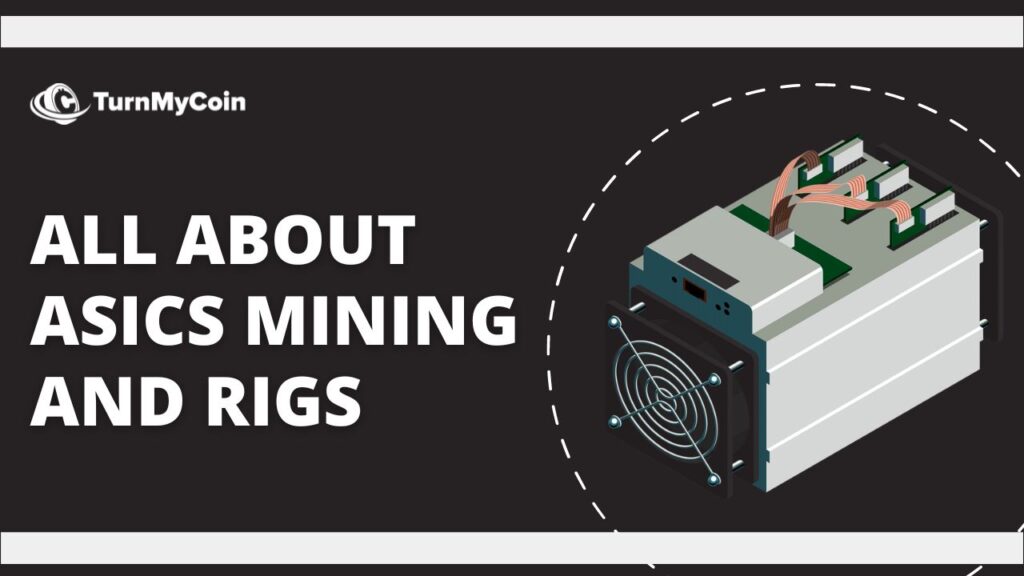Last updated on July 7th, 2024 at 08:44 am

Introduction
ASIC mining, or Application Specific Integrated Circuit mining, is a method of extracting cryptocurrency, especially Bitcoin using specialized hardware designed specifically for that purpose.
The purpose of ASIC is to increase the efficiency and profitability of the mining process.
ASIC mining is different from traditional mining methods like using a computer’s CPU or GPU, as it is specifically designed for one task: mining for cryptocurrency.
An ASIC miner can only mine for cryptocurrency, unlike a computer’s CPU or GPU which can perform various tasks one example being gaming. This specialized design allows for a much higher level of efficiency and performance, making it a more profitable method of mining.
What is Asics Mining in Comparison to GPU and CPU mining
When compared to GPU and CPU mining, ASIC mining is significantly more efficient. While GPUs and CPUs can be used for a variety of tasks, they are not as efficient at solving the complex mathematical equations required for mining as ASICs.
This is because ASICs are built specifically for this purpose and are optimized for the specific algorithm used by the cryptocurrency being mined. This results in a much higher hash rate, or the number of calculations per second, which in turn results in more mined coins.
Additionally, ASICs consume less power and generate less heat than GPUs and CPUs, making them a more cost-effective option.
Advantages of ASIC Mining
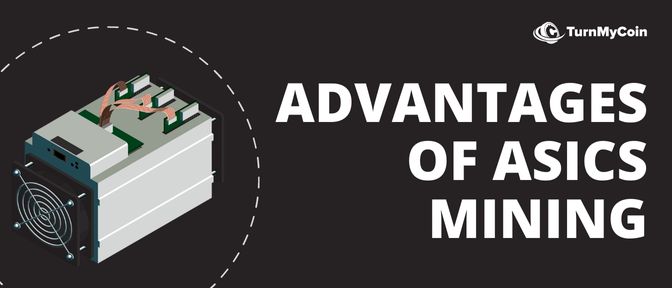
There are several advantages to using ASICs for mining.
- Higher Efficiency: One of the main advantages is their efficiency. As mentioned earlier, they are much more efficient at solving the complex mathematical equations required for mining than other types of devices, which results in a much higher hash rate and more mined coins.
- Cost Effective: Additionally, they consume less power and generate less heat, which makes them a more cost-effective option.
- Durability: Another advantage is that they are more durable than other types of devices, as they are specifically designed for mining and are built to withstand the rigors of constant use.
- More Secured: Finally, ASICs are more secure than other types of devices, as they are less susceptible to hacking and other forms of malicious attacks.
What is ASICs Mining Rig?
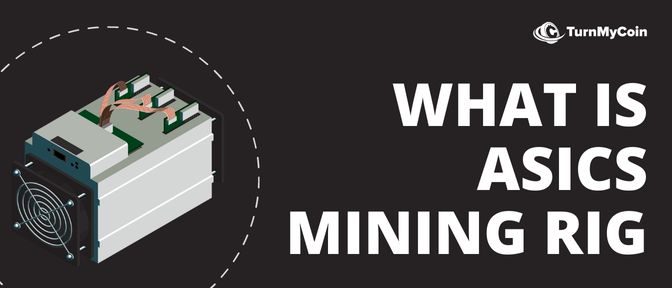
Let’s explore the different components of an ASIC mining rig, the process of setting up and configuring one, and the maintenance and upkeep required to keep it running efficiently.
Components of an ASIC Mining Rig
An ASIC mining rig typically includes the following components:
- ASIC Miner: This is the main component of the asic mining rig and is responsible for performing the actual mining process. It contains the ASIC chip, which is designed specifically for mining a particular cryptocurrency.
- Power Supply Unit (PSU): The PSU provides power to the ASIC miner and other components of the rig. It is important to choose a PSU with enough power to support the ASIC miner and any additional components.
- Cooling system: ASIC miners generate a lot of heat during the mining process, so it is important to have a cooling system in place to keep the temperature within safe limits. This can include fans, air conditioning, or liquid cooling systems.
- Motherboard: The motherboard connects all the components of the rig together and allows communication between them. It is important to choose a motherboard that is compatible with the ASIC miner and other components.
- Memory: Some ASIC miners require additional memory to function properly. This can include RAM or flash memory.
- Casing: The casing is used to house all the components of the rig and protect them from dust, moisture, and other environmental factors.
Setting up and configuring an ASIC mining rig
Breaking down into several steps can make the process of setting up and configuring an ASIC mining rig less complex.
- Assemble the components: This includes putting the casing together, installing the motherboard, attaching the cooling system, and connecting the power supply.
- Install the ASIC miner: This includes connecting the ASIC miner to the motherboard, power supply, and cooling system.
- Install any necessary drivers and software: This includes installing any drivers for the ASIC miner and any software required to communicate with the mining pool.
- Configure the mining software: This includes setting up the mining pool, setting up the worker, and configuring any other settings such as the mining algorithm and difficulty level.
- Test the rig: Once everything is set up and configured, it is important to test the rig to ensure it is working properly. This can include running a test mining session or monitoring the temperature and power consumption.

Maintenance and upkeep of an ASIC mining rig
To ensure an ASIC mining rig is running efficiently, it is important to perform regular maintenance and upkeep:
- Monitor temperature: The temperature of an ASIC miner can have a significant impact on its performance, so it is important to keep an eye on it and make adjustments as necessary.
- Check for dust buildup: Dust can accumulate in the casing and on the cooling system, reducing its effectiveness. It is important to clean the rig regularly to prevent dust buildup.
- Update software and firmware: As new updates are released for the mining software and firmware, it is important to install them to ensure the rig is running at its best.
- Monitor power consumption: Keeping an eye on power consumption can help identify any potential issues with the power supply or other components.
- Check for hardware issues: Regularly checking for hardware issues such as damaged or worn out components can help prevent issues
Factors that affect the Profitability of ASIC Mining
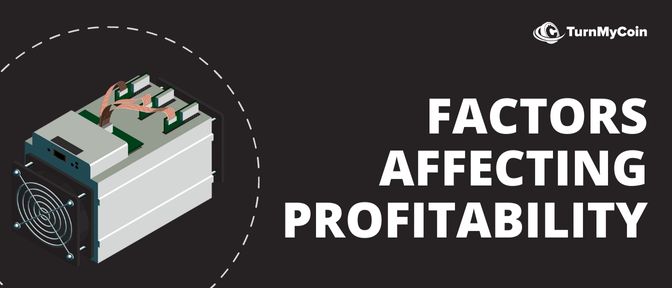
We will explore the factors that affect the profitability of ASIC mining, ways to calculate potential profits, and how ASIC mining compares to other forms of mining.
- Hash rate: Hash rate, or the computational power of the ASIC miner, is one of the most important factors in determining profitability. A higher hash rate means more mining power and a greater potential for profits.
- Power consumption: ASIC miners consume a lot of power, and electricity costs can eat into potential profits. It is important to consider the cost of electricity when evaluating profitability.
- Difficulty level: The difficulty level of mining a particular cryptocurrency can change over time. As the difficulty level increases, it becomes more difficult to mine and less profitable.
- Cryptocurrency price: The price of the cryptocurrency being mined can also have a significant impact on profitability. If the price of the cryptocurrency increases, profits will likely increase as well.
- Mining pool fees: Joining a mining pool can increase the chances of finding a block and earning rewards. However, mining pools usually charge a fee, which can also affect profitability.
Calculating potential profits
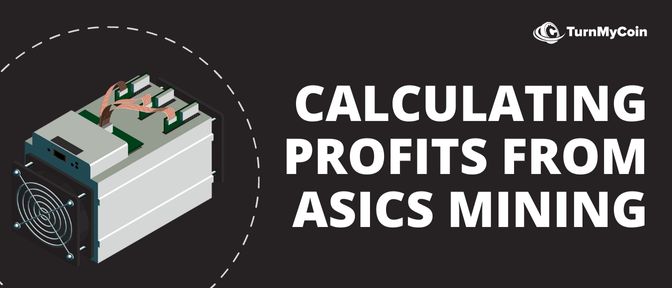
To calculate potential profits from ASIC mining, you can use a mining calculator. A mining calculator allows you to input information about your ASIC miner, such as its hash rate, power consumption, and electricity cost, and it will give you an estimate of the potential profits.
List of a few good calculators are:
It is important to keep in mind that these calculations are estimates and that actual profits can vary greatly.
Comparison to other forms of mining
ASIC mining is not the only way to mine cryptocurrencies, and it is important to compare it to other forms of mining.
One alternative to ASIC mining is GPU mining, which uses a graphics processing unit instead of an ASIC. GPU mining is typically less efficient and less profitable than ASIC mining.
Another alternative is cloud mining, which allows individuals to rent mining power from a company and mine without having to purchase and maintain the hardware.
Cloud mining can be less risky than buying and maintaining your own hardware, but it also tends to be less profitable.
Popular ASIC mining hardware

There are many different ASIC mining hardware options available, each with its own set of performance and efficiency characteristics. Here we are providing an overview of some of the top ASIC mining hardware, comparing the performance and efficiency of different options, and discussing the pros and cons of different ASIC mining hardware.
Please Note: the performance and other indicators are mentioned according to the set of information available at the time of posting this article. There may be updated versions available in the market while you are reading this article.
Overview of top ASIC mining hardware
- Antminer S19: Bitmain, one of the leading manufacturers of ASIC mining hardware, produces the popular ASIC miner Antminer S19. It has a hash rate of up to 110 TH/s and power consumption of around 3250W.
- Innosilicon T3: The Innosilicon T3 is another popular ASIC miner, known for its high hash rate and efficiency. It has a hash rate of up to 43 TH/s and a power consumption of around 2000W.
- Whatsminer M20S: The Whatsminer M20S is another highly efficient ASIC miner, with a hash rate of up to 68 TH/s and a power consumption of around 2920W.
- Bitfury Tardis: The Bitfury Tardis is a newer ASIC miner that has gained popularity due to its high hash rate and efficiency. It has a hash rate of up to 88 TH/s and power consumption of around 4300W.
Comparison of performance and efficiency
When comparing the performance and efficiency of different ASIC mining hardware options, it is important to consider the hash rate, power consumption, and overall efficiency of each device.
For example, the Antminer S19 has a higher hash rate than the Innosilicon T3, but it also has a higher power consumption. The Whatsminer M20S has a similar hash rate to the Antminer S19, but it is more efficient in terms of power consumption. The Bitfury Tardis has the highest hash rate but also the highest power consumption of all the options mentioned here.
Pros and cons of different ASIC mining hardware
Each ASIC mining hardware option has its own set of pros and cons. Both the Antminer S19 and Whatsminer M20S gain reputation for their high hash rate and efficiency . However, the Antminer S19 has a higher power consumption. On the other hand, the Innosilicon T3 has a lower hash rate but it is more efficient in terms of power consumption. The Bitfury Tardis has the highest hash rate but it also has the highest power consumption.
Ultimately, the choice of ASIC mining hardware will depend on individual needs and preferences. Factors such as the cost of electricity, the desired hash rate, and the overall efficiency will all play a role in determining the best option.
Conclusion
As technology continues to evolve, it is likely that we will see further developments in ASIC mining. These could include improvements in ASIC chip technology, which could lead to more efficient and powerful ASIC miners.
Additionally, new cryptocurrencies may emerge that are better suited for ASIC mining. As the industry continues to evolve, it will be important for those interested in ASIC mining to stay informed about new developments and adapt accordingly.
